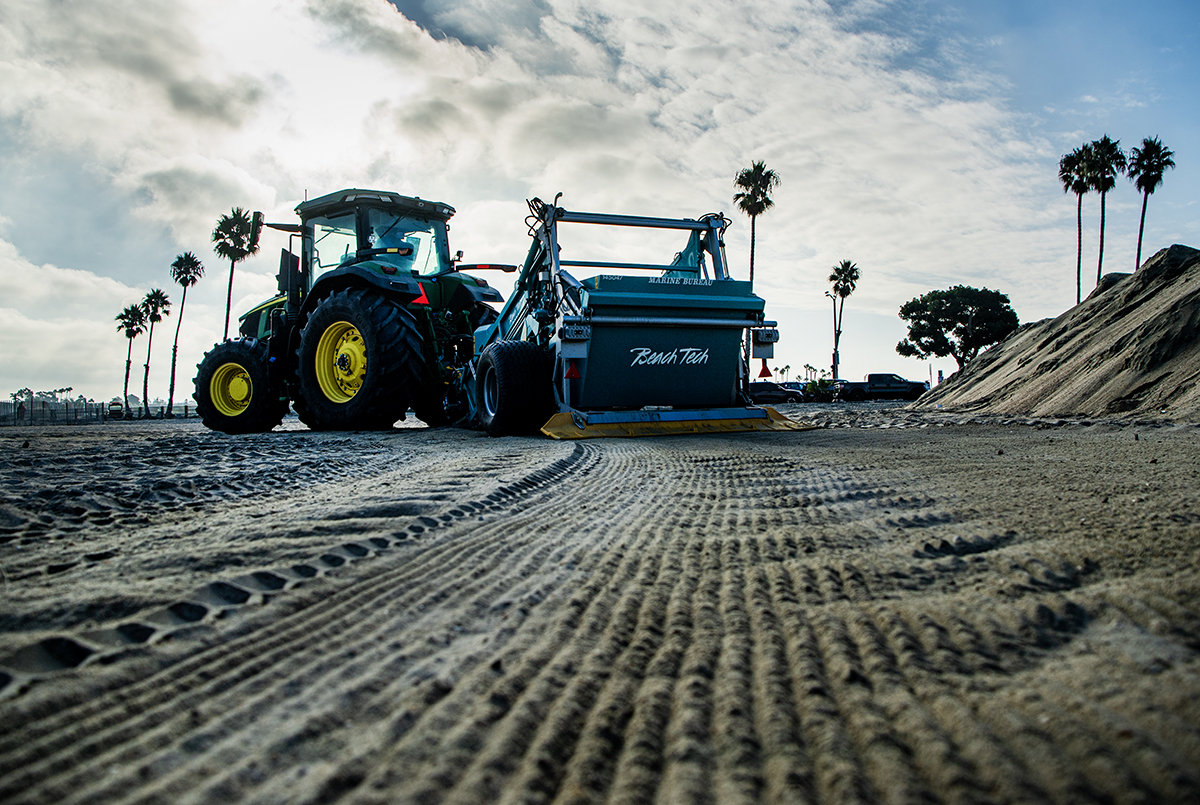At dawn, engines herald the morning, a grumbling hum from heavy machines driven in striping lines on the beach.
The machines are combing for trash, carving several inches deep into the sand and pulling from it small debris: wood chips, straws, bottle caps, needles.
The routes taken are the same every day, one-fifth of the city’s beachfront over the course of eight hours, Monday through Friday. It’s a Sisyphean task for the operators and a bane to sleeping neighbors. The daily cleans are a noisy but necessary countermeasure to the spectacular amounts of trash that wash onto Long Beach shores every day.
In an average summer, city workers say they pull 60 to 90 tons of debris each month. When the rainy season starts in September, that jumps to 1,000 tons a month until April.
While some of the rubbish is local, much of it comes from the 51-mile-long Los Angeles River, which flows from the western end of the San Fernando Valley in the Santa Susana Mountains and acts as a giant storm drain, catching the runoff — an estimated 4.5 million pounds a year — as it passes through 17 cities and six smaller tributaries.
Though a network of catch basins, boom systems and interceptors, it’s the largest debris-capturing project in the nation, a union of city-county-state-federal innovation that spans decades. But despite best efforts, it’s getting more and more expensive to manage the increased amounts of trash flowing downstream to Long Beach, the last line of defense before debris drifts to sea.
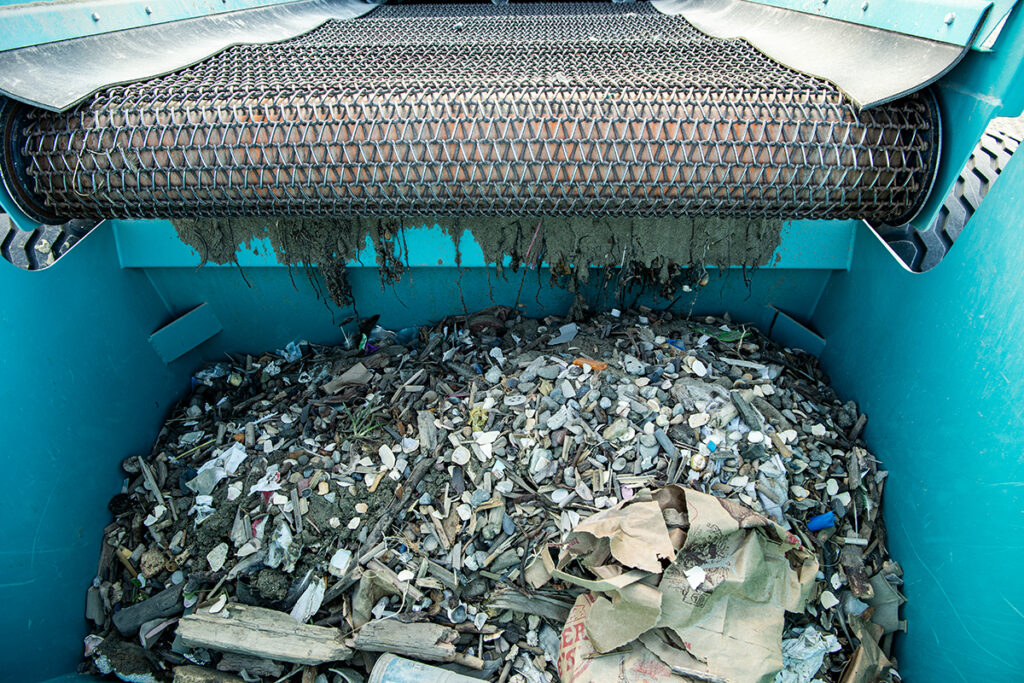
According to the Public Works Department, the city has collected more than 12,500 tons of trash from 2020 to 2024, which cost a staggering $12.3 million. The raw tonnage has also grown in recent years, spiking in 2023 and remaining above average in 2024. In the most recent fiscal year, the city paid seven times more for labor and materials than four years prior.
Factoring in staff, equipment and fuel, it costs the city about $1,000 to clean every ton of trash off the shoreline.
As Long Beach faces looming budget deficits and another upcoming rainy season, the matter has now reached “a critical juncture,” according to the city’s Marine Commission. In a letter this month, they urged the mayor and City Council to act swiftly in stemming the flow of trash and pressuring others to help cover the costs.
As a start, the letter advocates for direct support payments from the county but also recommends Long Beach press for an overhaul of the entire existing system, calling the current arrangement “insufficient” and “fundamentally inequitable.”
“This is something that really, really disturbs me,” said Commissioner Bruce Mac Rae. “In my sense, and I put this on the record, this should be a million dollars from every county supervisor for the help to keep our beaches clean.”
Clean water advocates hailed the call as long overdue, saying the system in place is not strong enough to remedy the blighted watercourse.
“There’s too much trash in the river and that’s the thrust of it,” said Ben Orbison with Friends of the L.A. River. “And Long Beach communities have borne the brunt of a lot of environmental injustice.”
A lot of the frustration is sourced upstream, where a total of 85 incorporated cities ultimately drain into the river’s watershed.
About 40 miles northwest of Long Beach, George Wolfe, an environmental activist and kayaker, grabs a soggy softball out of the riverwater before pointing toward the source of this particular litter, a ballfield on the other side of the high-sloped bank.
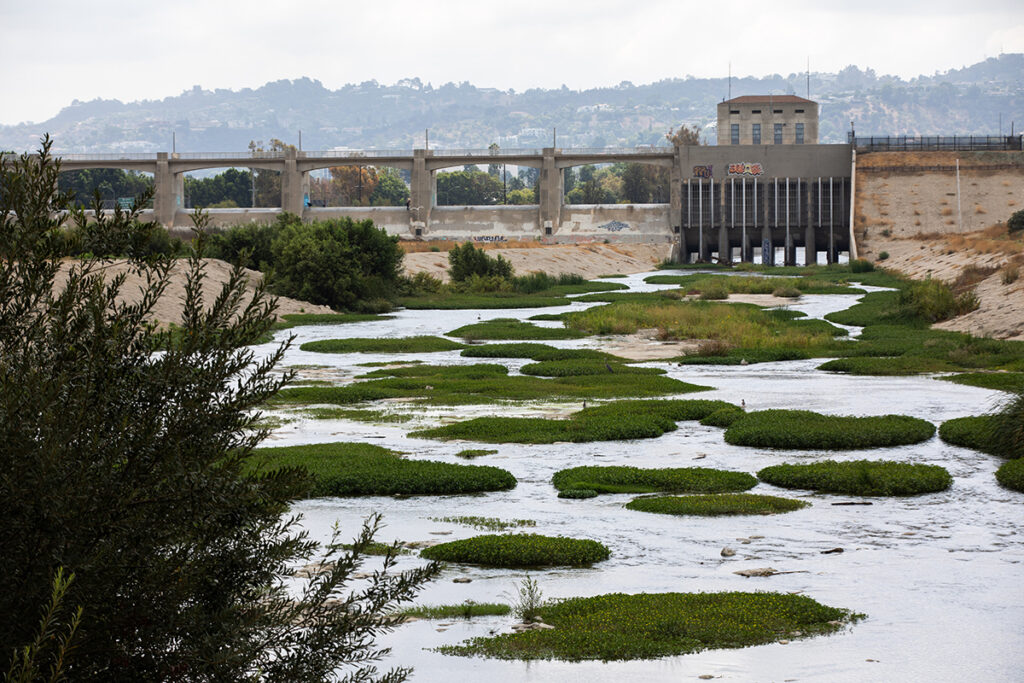
In the tributary Sepulveda Basin, Wolfe pushes through dense foliage, revealing homeless encampments along the riverbanks. A propane stovetop, plates and cutting board are set up across milk crates. There are shopping carts, suitcases, televisions and rotten mattresses strewn about — all examples of items that could eventually wash onto Long Beach’s sand.
Today, the water is mostly still, but when rains arrive, it can become a swiftly rising torrent.
Wolfe points to a bedsheet twisted around a branch some 20 feet from the ground.
“Gives you somewhat of an idea of how high the water can get,” he said.
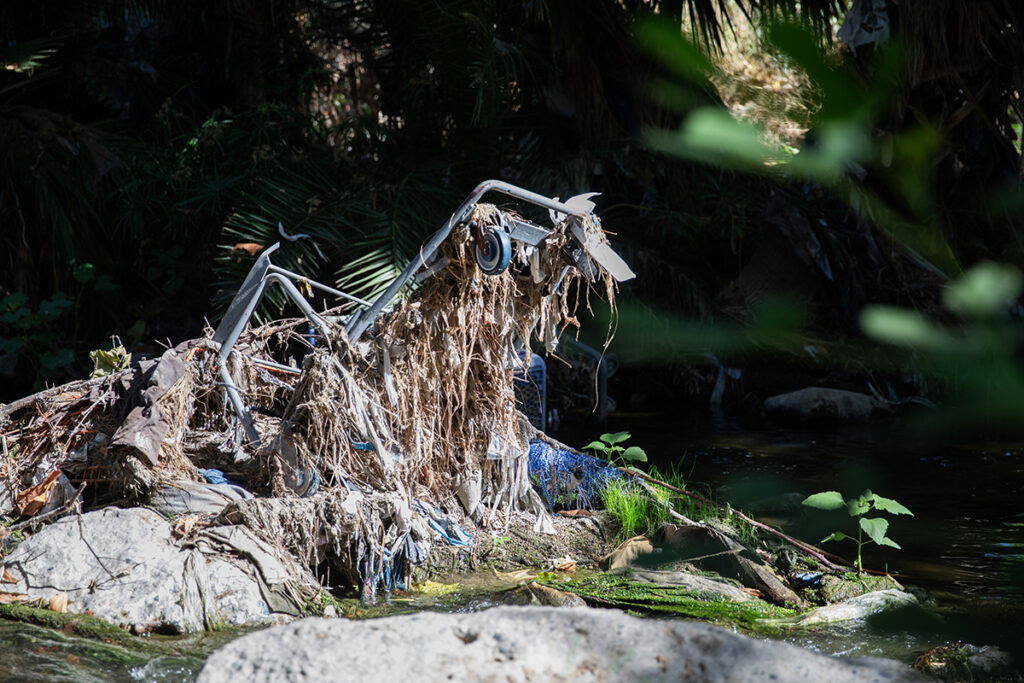
Long Beach’s last line of defense is a boom floating at the mouth of the river just below the Ocean Boulevard bridge. It captures about 1,000 tons of rubbish a year before it reaches the ocean.
Yet during the heavy rains, the 25-year-old boom often breaks under the swift current, sending its collected bounty downstream. A soda bottle tossed to the curb in Downey, or a shopping cart in Encino Village, may shuttle downriver and eventually land in Long Beach shores.
During drier months, the city’s beaches, tested by Heal the Bay, earn high grades for their water quality. Yet during the rainy season, according to a 2025 report by the nonprofit, 14 of the 15 sites earned Fs.
Amid downpours, Long Beach workers rush to the mouth of the river to scoop up the floating islands of plastic bottles, grocery bags and other debris before it’s all swept onto local beaches or pulled out to sea.
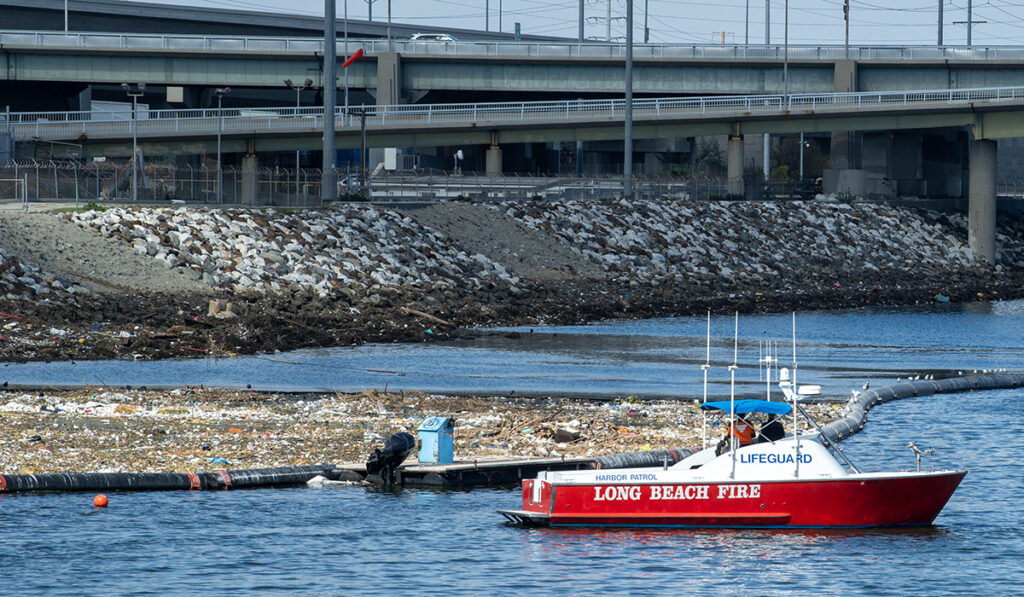
Others hurry to the beach, laboring from dawn to dusk, using dozers to pull twisted piles of debris from the water’s reach and pushing it into piles that resemble sand dunes along the shore.
It’s a marathon of work, expected after every major storm, and can tank morale among the beach workers who perhaps the day prior had the beach in pristine condition.
Kelly Armstrong, a city beach superintendent, said the issue is not just a matter of money but rather in how the county holds other cities more accountable.
“Our stormwater division operators work really hard to limit anything going into the gutters that eventually leads to the ocean,” Armstrong said. “I think a lot of those other cities need to do as much as they can to prevent runoff … because we just take the brunt of everything.”
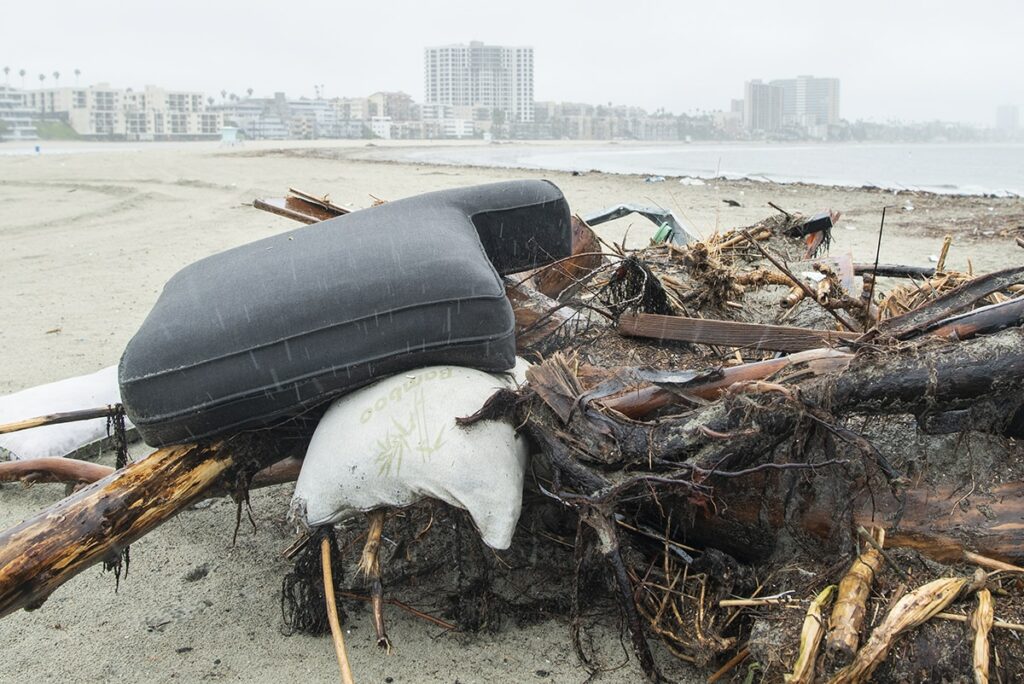
While responsibilities for maintaining the river are shared among five county, state and federal agencies, it is the Los Angeles regional branch of the State Water Resources Control Board that ultimately doles out punishment and other enforcement to cities that do not temper their trash.
The board enforces rules set by a 2006 program that required cities to reduce the amount of litter flowing into the river from its storm drains and channels by 10 percent each year for 10 years, with a goal of a clean river by 2016.
That didn’t happen, though progress is being made, officials said Tuesday.
Rubbish entering the Los Angeles River has decreased since 2006, said board spokesperson Edward Ortiz, adding that some cities have achieved “full compliance with the zero trash goal.”
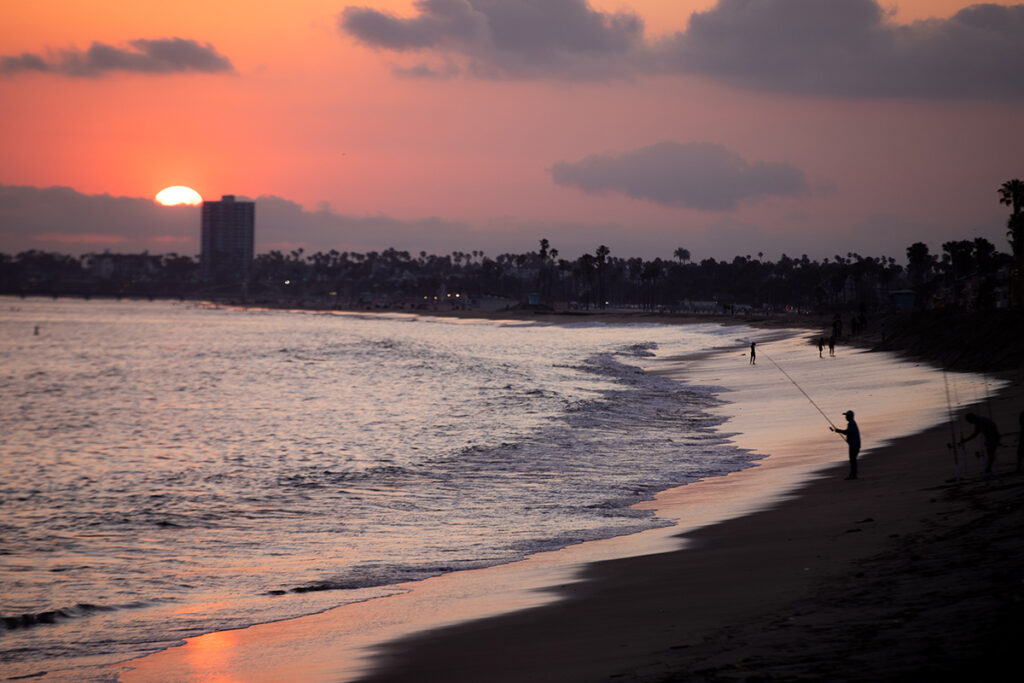
Details on which cities, however, were not provided. Ortiz explained that there are cities that continue to violate the rules and allow trash to flow downriver. Typically, these infractions are met with notices, clean-up orders or fines.
The board has, since 2019, issued 13 notices of violations for trash in the L.A. River, but has not sent any settlement offers, cleanup or abatement orders for trash violations, Ortiz said.
Separately, the board last year sent a dozen settlement offers to cities and municipalities over stormwater sewer violations, including the Los Angeles County Flood Control District, the city and county of Los Angeles, the Cities of Los Angeles, Lomita, Carson, Torrance, Rolling Hills, Rolling Hills Estates, Palos Verdes Estates, Rancho Palos Verdes and La Habra Heights.
The combined monetary penalty in all the offers totals $669,000.

